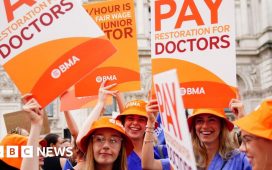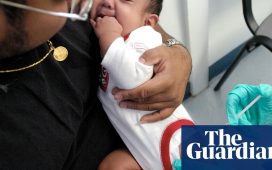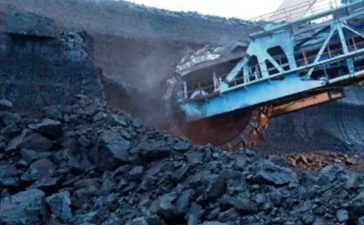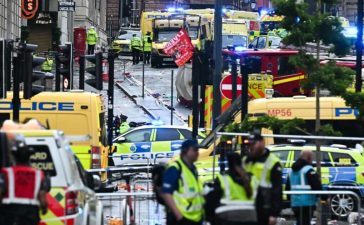Coach driver Saroj Khadka was at home in Kent, enjoying a relaxing week off work. After a morning at the gym, he called in on a friend to plan a fishing trip before heading home to cook lunch.
As he finished his food he began to feel odd but, as a fit and healthy 48 year old who says he’d never visited his GP, Saroj wasn’t too concerned. “I don’t like sitting around, but my wife Sarah suggested I take it easy for a bit,” he recalls. “We thought I may have overdone it at the gym.”
While Sarah, who was working from home for a technology company, joined a video call, Saroj took an indigestion tablet and settled down on the sofa. It’s the last thing he remembers of October 2018.
Still on her call, Sarah heard her husband get up and go into the bathroom. “Then I heard a really loud thud,” says Sarah, now 58. “I went to investigate and found Saroj out cold on the bathroom floor.”
He was unresponsive, eyes rolled back and his body twisted. Sarah grabbed the landline and called 999, the responder taking her through a series of checks before asking her to begin CPR.
“I’d learned CPR as a Girl Guide, but that was 40 years before,” she admits. “I’d never done it on a person.”
Sarah performed CPR for an exhausting 10 minutes, though she completely lost track of time. “I started to get really tired and the call handler was wonderful. I was probably hysterical but he was firm and clear, counting and keeping me going, letting me know help was nearby.”
While many people believe the purpose of CPR is to restart the heart, this isn’t the case, although sometimes it does happen. Instead, the chest compressions and ‘rescue breaths’ are designed to keep blood – and therefore oxygen – flowing to the brain and other organs until a defibrillator or an ambulance crew arrive, reducing the risk of permanent brain damage or disability.
When the medics arrived on the scene, they took over from Sarah and used a defibrillator while waiting for the Kent Surrey Sussex Air Ambulance (KSS) to arrive.
“I found out recently that the helicopter landed on the golf course that backs on to our garden. There’s no way through, so they had to run the long way around with all their kit,” says Sarah. “Nobody ever plans for the day when you need the Air Ambulance and yet, when you do, they’re there like superheroes in their red uniforms.”
KSS transferred Saroj to a LUCAS device for delivering mechanical chest compressions. “It looked gruesome,” says Sarah, “as Saroj’s chest was being pummelled mechanically. We were lucky though, because the Air Ambulance had only recently got the machine. It was critical in maintaining CPR while Saroj was moved by road to the cardiac centre at St George’s Hospital in London.”
On route, they managed to restart Saroj’s heart, which, by this point, had not been beating for over 40 minutes. The crew knew this meant his chances of surviving were less than 1 per cent. Sarah, following behind in a car with a friend, had no idea what was happening. “It was utterly bewildering,” she says. “We were driving past a huge cemetery and I thought, I have no idea if he’s dead or alive.”
With Saroj in emergency surgery to fit a stent, Sarah was unable to see him for hours. In addition to suffering cardiac arrest with main arteries completely blocked, Saroj’s lungs had been punctured by the efforts to restart his heart and his kidneys were impacted too.
After a “really horrible few hours” not responding to treatment, a doctor asked to see Sarah. “I thought he was going to tell me Saroj had died,” she admits.
Instead of the worst news, it was a “glimmer” of hope. Specialist life support was available from an extracorporeal membrane oxygenation (ECMO) heart-lung machine at the Royal Brompton Hospital, which pumps blood from the body and oxygenates it – allowing the heart and lungs to rest – and then pumps it back into the body. This would give Saroj the chance he needed to survive.
Recovery was painstakingly slow. Saroj would not regain consciousness for a month, spending 53 days in two hospitals, with treatment including the fitting of a temporary pacemaker and his kidneys supported by dialysis, before he was finally allowed home.
Saroj, says, “I have no memory of being in intensive care. The muscle wastage was so bad I couldn’t sit up in bed and I couldn’t speak. The first time I looked in the mirror I didn’t recognise myself.
“Sometimes I shut my eyes and try to remember, but I can’t. It feels like a dream. I’ve been able to keep the nurses’ diaries from the time, along with cards from friends and family. I read them later on and it was so emotional, but it really did help me with my recovery.”
Duncan Bootland, Medical Director of KSS Air Ambulance, says: “I think about Saroj and Sarah’s story often. When we met him, his chances of survival were extraordinarily low but despite this he’s made the most incredible recovery. However, without every single person in Saroj’s ‘chain of survival’, things would have been very different. Sarah starting CPR and continuing until the ambulance team arrived was key.”
Saroj, now 53, remains under hospital supervision and is medically retired, suffering myopathy and neuropathy in his feet. Sarah was eventually diagnosed with PTSD but she says, “Now things finally feel back to ‘normal’, which is brilliant. Saroj was out for a long time, he could have had brain damage,
but he’s back.”
Saroj and Sarah are now big supporters of KSS Air Ambulance, which is a charity. Unsurprisingly, they also want to encourage as many people as possible to learn CPR. “It’s so important to start CPR straight away,”
says Sarah. “Call 999 and start thumping that chest – you can’t do very much wrong, but you might save someone’s life.”
■ Donate to Kent Surrey Sussex Air Ambulance Charity at aakss.org.uk










